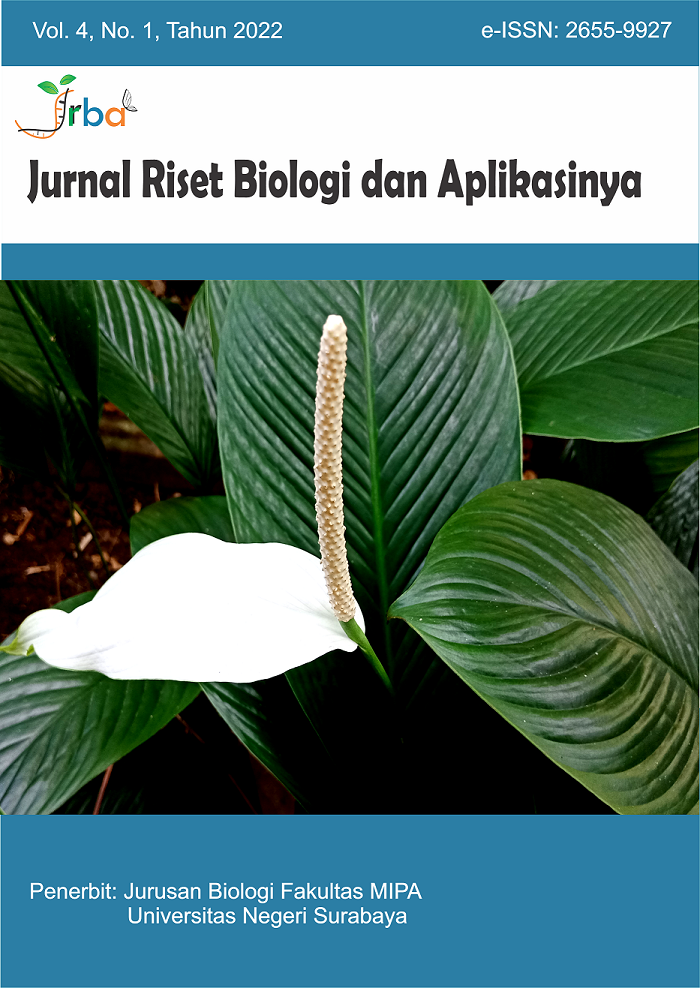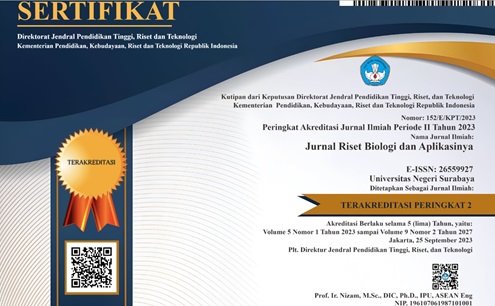Antibacterial Activity of Garlic Added to Tempeh against Bacillus sp. and Escherichia coli
DOI:
https://doi.org/10.26740/jrba.v4n1.p34-41Keywords:
antibacterial activity, fermentation, garlic, tempeAbstract
Tempeh (tempe) has been known to have antibacterial properties due to the presence of glycoprotein compounds, antimicrobial peptides, and flavonoids produced by the fungus Rhizopus spp. during the fermentation process. The addition of garlic powder is expected to increase the antibacterial activity of tempeh against contaminant bacteria. This research aimed to analyze the antibacterial activity, water content, and organoleptic properties (taste, aroma, and color) of tempeh with garlic powder supplementation. Garlic powder was added to the tempeh fermentation process with various concentrations of 0.15, 0.25, 0.50, and 0.75%. Antibacterial activity, water content, and qualitative organoleptic tests were analyzed using paper disk diffusion, gravimetric, and questionnaire methods. The results showed that the addition of garlic powder in all treatments for Bacillus sp had shown an inhibitory activity with moderate strength with an inhibitory power of 0.15; 0.25; 0.50; and 0.75% respectively 8±1.71; 10±1.71; 7±0.96; 9±0.58. Meanwhile, Escherichia coli showed no inhibitory activity. The addition of garlic powder at a concentration of 0.25% reduced the water content to 58.25±0.03. In addition, the addition of garlic powder was not able to affect the color but was able to influence the aroma and taste of tempeh. Garlic powder was able to inhibit Bacillus sp with the best concentration of 0.25%; the addition of garlic powder can reduce the water content and affect the aroma and taste of tempeh.
References
Badan Standardisasi Nasional. 2015. Tempe Kedelai. In Tempe Kedelai SNI 344 : 2015. Badan Standardisasi Nasional, Jakarta
Budiono, R. A. (2016). Pengaruh Jenis Kapang terhadap Aktivitas Fermentasi Tempe Saga Pohon (Adenanthera pavonina L.) [Skripsi]. Jakarta: Fakultas Sains dan Teknologi, Universitas Islam Negeri Syarif Hidayatullah
Downloads
Published
How to Cite
Issue
Section
License
Copyright (c) 2022 Jurnal Riset Biologi dan Aplikasinya

This work is licensed under a Creative Commons Attribution-NonCommercial 4.0 International License.
 Abstract views: 528
,
Abstract views: 528
, PDF Downloads: 703
PDF Downloads: 703












